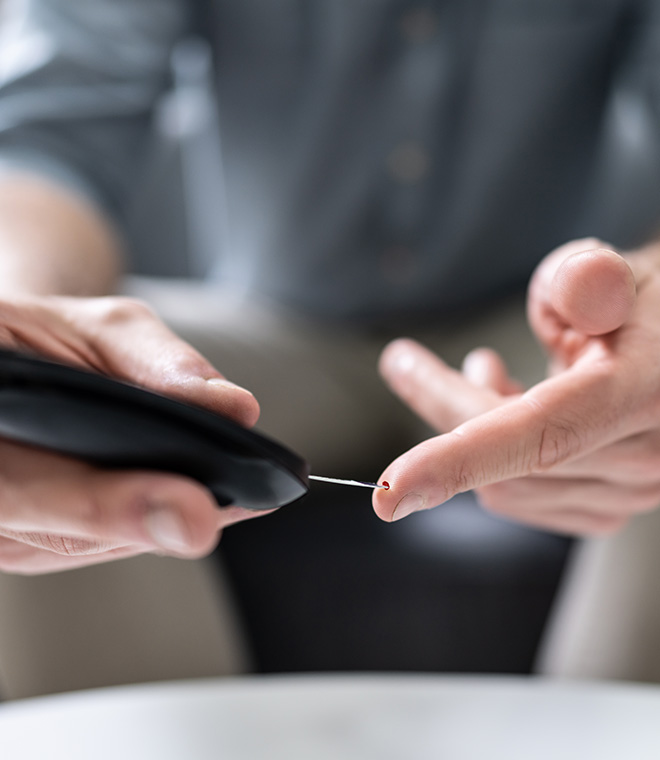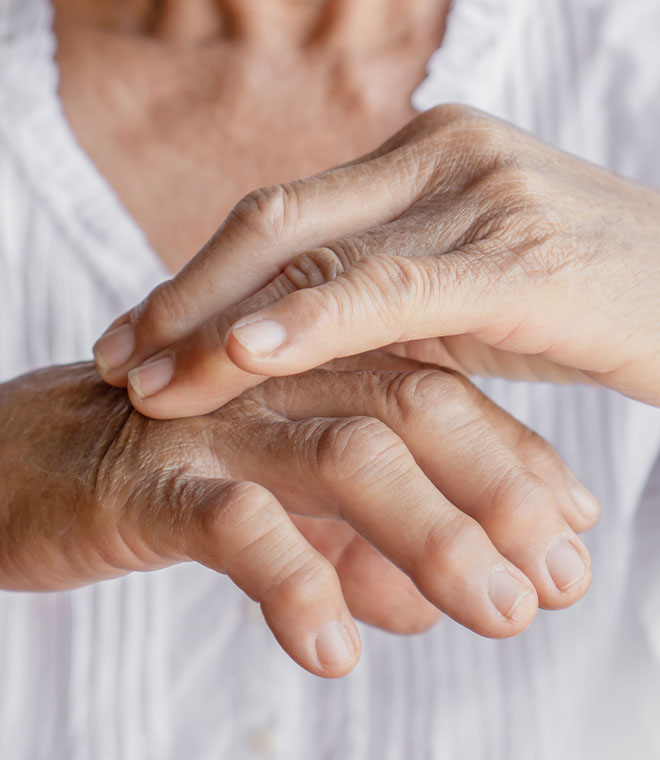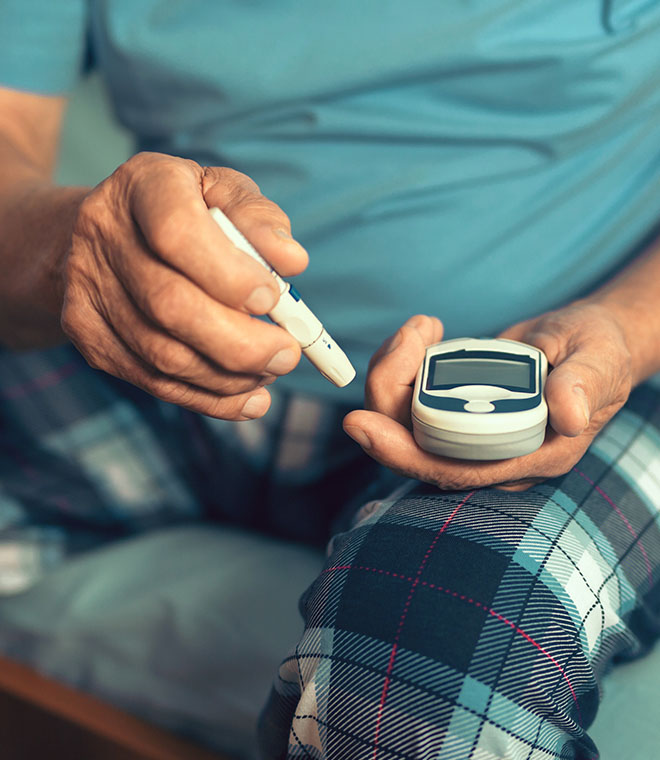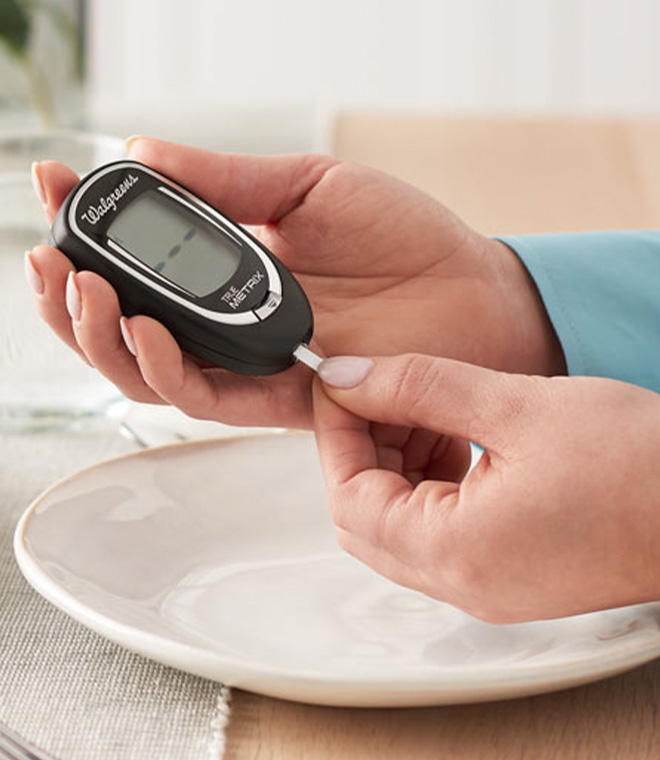Health
What is diabetes?
By: Margot Hedlin Jul 21, 2021 • 22 min
Diabetes is the result of the body losing the ability to control blood sugar levels. Over time, this can harm your kidneys and other organs, increase your risk of heart disease and lead to other complications. While there's no cure or way to reverse diabetes at this time, people with diabetes have more power to control their condition than ever before.
If you're at risk for diabetes, healthy lifestyle choices can help delay or prevent a diagnosis. If you already have diabetes, there are many strategies that can help you keep your blood sugar in a healthy range and reduce your chance of developing complications.
Read on to learn more about diabetes, including details about type 1 vs. type 2 diabetes, ways to lower your risk of the condition and how to care for your health.
What is diabetes mellitus?
Diabetes refers to a group of diseases that affects how the body uses glucose and causes blood sugar levels to rise higher than normal. Diabetes develops when your body doesn't make enough insulin or when it can't use insulin properly. Insulin is a hormone that helps move glucose from the blood into the cells, where it's used for energy. Without enough insulin, glucose stays in the blood.
What is type 1 diabetes?
Also referred to as juvenile diabetes or insulin-dependent diabetes, type 1 diabetes often starts in childhood or early adulthood. However, the disease can develop at any age. In type 1 diabetes, the body makes little or no insulin. People with type 1 diabetes must take insulin shots (or wear an insulin pump) every day to manage blood sugar levels.
What is type 2 diabetes?
Previously known as adult-onset diabetes, type 2 diabetes can start at any age. In type 2 diabetes, the body stops using insulin properly (called insulin resistance) or doesn't make enough insulin.
Between 90% to 95% of people with diabetes have type 2 diabetes, making it the most common form of the disease. Type 2 diabetes is treated with lifestyle changes, including weight loss, diet and exercise, and sometimes diabetes pills, insulin or other injectable medicines.
What is prediabetes?
One of the biggest warning signs of type 2 diabetes is prediabetes, in which blood sugar levels are above normal but not high enough to be called diabetes. As with type 2 diabetes, you might not be able to make enough insulin or your cells become resistant to the action of insulin.
Since prediabetes usually comes without symptoms, the only way to know for sure if you have it is to get a blood test. Being diagnosed with prediabetes doesn't necessarily mean you're destined to get diabetes. Healthy lifestyle changes, like losing weight if you're overweight and getting regular physical activity, can lower your risk for developing type 2 diabetes and improve your overall health.
What is gestational diabetes?
There's one type of diabetes unique to pregnant women: gestational diabetes. In gestational diabetes, pregnancy hormones block insulin's actions, causing blood sugar to rise to dangerous levels. Gestational diabetes usually goes away after the baby is born, but women who have had the disease have an increased risk of developing type 2 diabetes.
Gestational diabetes can also cause problems with the pregnancy and can increase your baby's chances of developing type 2 diabetes in the future. Your healthcare provider will likely screen you for gestational diabetes during weeks 24–28 of pregnancy.
What is brittle diabetes?
Brittle diabetes is a term that is sometimes used to describe hard-to-control diabetes. It is marked by frequent, unexpected bouts of hypoglycemia (low blood sugar) or recurrent diabetic ketoacidosis (a dangerous condition caused by high blood sugar where the body produces too many blood acids called ketones).
What is diabetic insipidus?
Diabetes insipidus is unrelated to diabetes mellitus. A rare condition, diabetes insipidus happens when a person's kidneys pass an unusually large amount of urine that's insipid (diluted and odorless). Unlike people with diabetes mellitus, those with diabetes insipidus have normal blood sugar levels. However, both conditions may cause increased thirst and urination.
There are several types of diabetes insipidus, including nephrogenic diabetes insipidus. In this form, the kidneys don't respond normally to vasopressin, a hormone that controls the rate at which fluid is removed through urination. This causes too much fluid to be removed from the bloodstream.
What causes diabetes?
The exact cause of type 1 diabetes is unknown, but it's believed to occur when a glitch in the immune system causes immune cells to attack the insulin-producing cells in your pancreas. Genetics appear to play a role in the cause of diabetes. Having a family history of type 1 diabetes puts people at higher risk of developing the disease. Environmental factors, such as viruses, also might trigger the immune attack.
Several factors seem to contribute to type 2 diabetes. People who are physically inactive, overweight and carry extra belly fat have a higher risk for insulin resistance and type 2 diabetes. Genetics also seem to play a role in type 2 diabetes.
What are the symptoms of diabetes?
Type 1 diabetes symptoms and type 2 diabetes symptoms can include:
- Frequent urination
- Increased thirst and hunger
- Fatigue
- Blurry vision
People with type 1 diabetes may also experience unexplained weight loss, while those with type 2 diabetes may feel tingling, pain or numbness in their hands and feet. In addition to having the same symptoms of diabetes that adults do, signs of diabetes in children can also include fruity-smelling breath and mood changes, such as being more restless or moody than normal.
When it comes to symptom onset, there can be differences between type 1 and type 2 diabetes. In type 1 diabetes, symptoms often develop quickly over a short period of time. In type 2 diabetes, symptoms may come on slowly over the course of many years and be mild, so you may not notice them.
How to test for diabetes
If you're wondering "do I have diabetes?", see your healthcare provider. Diabetes can be diagnosed with a blood test. There are several diabetes testing methods. Each method usually needs to be repeated on a second day to diagnose diabetes. If your provider determines that your blood sugar level is very high, or if you have symptoms of high blood sugar in addition to a positive test result, your provider may not require a second blood test to diagnose diabetes.
Tests used to diagnose diabetes include:
- Fasting plasma glucose test: This test measures your blood sugar after you've fasted for at least eight hours.
- Less than 100 mg/dL - Normal
- 100-125 mg/dL - Prediabetes
- 126 mg/dL or higher - Diabetes
- Oral glucose tolerance test: This test measures how quickly your blood sugar returns to normal after you fast, then drink a sugary liquid. You'll have your blood sugar levels checked before and two hours after you drink the beverage.
- Less than 140 mg/dL - Normal
- 140-199 mg/dL - Prediabetes
- 200 mg/dL or higher - Diabetes
- Hemoglobin A1C (a measure of your blood sugar for a three-month period): This test can be used to diagnose diabetes. If you already have diabetes, A1C can tell how well you are controlling your blood sugar.
- Less than 5.7% - Normal
- 5.7%–6.4% - Prediabetes
- 6.5% or higher - Diabetes
- Random blood glucose test: This test can be done at any time and doesn't require you to fast. You may have diabetes if your blood sugar is higher than 200 mg/dL.
- Glucose challenge test: This test is given to pregnant women to check for gestational diabetes. You don't need to fast for this test. You'll be asked to drink a glucose-containing liquid. One hour after you drink the beverage, you'll have your blood drawn. If your blood sugar is higher than 135-140 mg/dL, you may have gestational diabetes. Your healthcare provider will likely ask you to return for an oral glucose tolerance test before making a diagnosis.
Treatment for diabetes
The goal of treatment for diabetes is to get your blood sugar under control. Your healthcare provider will create an individualized care plan for you. Your treatment may involve the following:
- Losing weight if you're overweight
- Eating a nutritious diet, generally higher in protein and lower in carbohydrates
- Getting regular exercise
- Quitting smoking, if you smoke
- Taking diabetes medication, such as pills, insulin or other injectable drugs approved by the U.S. Food and Drug Administration (FDA) to control blood glucose levels
Your provider will likely also ask you to test your blood sugar at home regularly, at least initially. Testing shows how your blood sugar is responding to treatment. You'll need a glucometer (blood glucose meter), lancing device, lancets (needles) and test strips. Testing kits that include all of these supplies are available for purchase.
To test your blood sugar, prick your fingertip with a lancet, place a drop of blood on a test strip and insert the test strip into the glucose meter. The meter will calculate your blood sugar reading at that time. Your provider will let you know how often to test your blood sugar and what your personal blood sugar goals should be. General guidelines for people with diabetes are as follows:
- Before a meal: 80-130 mg/dL
- About two hours after starting a meal: less than 180 mg/dL
Chart your daily blood sugar readings in a diabetes app or notebook. Share your numbers with your healthcare provider at checkups so they can see how your treatment plan is working.
Monitoring your blood sugar every day can be critical to your health, especially if you take insulin. Extremely high blood sugar or extremely low blood sugar can lead to life-threatening emergencies, such as a diabetic coma. In a diabetic coma, you lose consciousness and are unable to respond to your environment. It can be fatal if left untreated.
What can you eat on a diabetic meal plan?
A diabetes diet is no different from a standard healthy diet. Strive to eat wholesome foods, including fruits, vegetables, whole grains, lean sources of protein, and nonfat and low-fat dairy products. In many cases, there are no foods to avoid with diabetes. Still, it's best to limit foods high in saturated and trans fats, added sugars and sodium (salt).
Your healthcare provider may recommend carbohydrate counting. Carbohydrates turn into glucose in the body, so they directly affect your blood sugar levels. The ideal number of carbohydrates you need depends on several factors, including your weight, your goal blood sugar levels, how much you exercise and what medications you take. Your healthcare provider can determine your carbohydrate goals. Consider seeing a registered dietitian to learn how to count carbohydrates. They may also share diabetic recipes with you.
When it comes to drinking alcohol, know that there are risks. Alcohol blocks the production of glucose in the liver. This could cause hypoglycemia, especially if you take insulin or medications for diabetes that stimulate the release of insulin. Severe low blood sugar is an emergency and can lead to seizures and brain damage. You can even develop hypoglycemia without diabetes if you drink alcohol in excess without eating. What's more, alcohol is processed by the liver, and so are some medications. If you're taking certain medicines and drink too much alcohol, it could harm your liver. If you choose to have a drink, make sure you know how alcohol can impact your blood sugar and learn how to do it safely. Talk to your healthcare provider before you mix alcohol and diabetes.
What is diabetic nerve pain, diabetic neuropathy, diabetic foot problems, diabetic retinopathy, diabetic gastroparesis and dermopathy?
When left untreated, high blood sugar levels can lead to dangerous complications that can affect your whole body, including your nerves, feet, eyes, digestive system and skin.
Diabetic neuropathy is nerve damage caused by high sugar levels and high levels of fats, such as triglycerides, in the blood due to diabetes. Peripheral neuropathy affects the feet, legs, hands or arms. It causes symptoms such as burning, tingling, numbness, weakness and diabetic nerve pain.
Nerve damage from diabetes can cause you to lose feeling in your feet, so you may not notice if you have a foot problem. Diabetes can also reduce blood flow to your feet, which can make it harder for a sore or an infection to heal. This can lead to a diabetic foot ulcer and even amputation. This is why people with diabetes should take special care to protect their feet, such as wearing shoes and socks at all times and not walking barefoot. Your healthcare provider may suggest you see a podiatrist, a specialist in foot health. You should check your feet each day. Call your healthcare provider if you have sores, blisters or cuts that don’t heal, a callus with dried blood inside, a foot infection that becomes black or foul-smelling, or red, warm or painful skin. You should also tell your provider if you have diabetic foot pain or leg pain.
Diabetic retinopathy is the most common form of vision loss in people with diabetes. Chronic high blood sugar levels can damage the blood vessels in the retina, which can distort vision and even lead to retinal detachment in the most advanced stage.
In diabetic gastroparesis, or delayed gastric emptying, the movement of food from your stomach to your small intestine slows or stops. This is caused by poorly working vagus nerve, the nerve responsible for moving food through the digestive tract. Over time, high blood sugar levels can damage the vagus nerve.
Diabetes can also cause skin problems, including dermopathy. This condition is brought on by changes to small blood vessels. It’s marked by light brown scaly patches on the front of the legs. It’s common to mistake dermopathy for age spots or a rash. The patches aren’t painful, and the condition is harmless and doesn’t require treatment.
Risk factors for diabetes
While it isn't fully understood why some people get diabetes and others don't, there are some clear risk factors. You have a higher risk of diabetes if you:
- Are overweight or obese
- Are age 45 or older
- Don't exercise regularly
- Had gestational diabetes, or gave birth to a baby who weighed more than 9 pounds
- Have a family member with diabetes
- Have high blood pressure, high triglycerides or low high-density lipoprotein (HDL or "good") cholesterol
- Are African American, Hispanic/Latino, Asian American, Pacific Islander, Native Hawaiian, Alaska Native or American Indian
- Have a history of heart disease or stroke
- Have depression
- Have polycystic ovarian syndrome (PCOS)
- Have acanthosis nigricans (dark, thick or velvety skin around your neck and armpits)
How to prevent diabetes
While some factors, like family history, are beyond your control, you can lower your chance of type 2 diabetes. The best way to reduce your risk is to lead a healthy lifestyle. Lose weight if you’re overweight by making healthy food choices and reducing portion sizes. Specifically, cut down on sugary snacks and fatty foods and replace them with vegetables, fruits and whole grains.
You should also get moving. Exercise improves your body’s response to insulin, meaning better blood sugar control, and also helps with weight loss. Aim for at least 30 minutes of exercise most days of the week. Talk to your healthcare provider, who can tell you what a healthy weight is for you and how to reach that goal.
Is there a natural cure for diabetes?
You may have heard about natural or folk remedies for diabetes. For instance, cinnamon has long been used as a therapy for type 2 diabetes. While a small study found that cinnamon may have a positive effect on blood sugar levels, other studies haven’t been able to replicate the results. So, it isn’t yet known if cinnamon is helpful for people with diabetes.
At this time, there is no known cure for diabetes. The best way to manage diabetes is to follow your care plan exactly as prescribed by your healthcare provider. If your blood sugar isn’t near your target range, let your provider know. Working together with your provider can help you manage your diabetes well.
Clinically reviewed and updated by Jenilee Matz, MPH, July 2021
- https://www.niddk.nih.gov/health-information/diabetes/overview/what-is-diabetes
- https://rarediseases.info.nih.gov/diseases/11900/brittle-diabetes
- https://www.diabetes.org/diabetes-basics/statistics/
- https://www.cdc.gov/diabetes/basics/type2.html
- https://www.niddk.nih.gov/research-funding/research-programs/diabetes-treatment-prevention-complications
- https://www.niddk.nih.gov/health-information/diabetes/overview/preventing-problems/nerve-damage-diabetic-neuropathies/peripheral-neuropathy
- https://www.niddk.nih.gov/health-information/kidney-disease/diabetes-insipidus
- "DKA (ketoacidosis) and ketones," American Diabetes Association. Web. 8 July 2021. https://www.diabetes.org/
- https://www.diabetes.org/diabetes-basics/symptoms/
- https://www.diabetes.org/diabetes-basics/diagnosis/
- https://www.niddk.nih.gov/health-information/diabetes/overview/symptoms-causes
- https://www.niddk.nih.gov/health-information/diabetes/overview/what-is-diabetes/gestational
- https://www.jdrf.org/t1d-resources/symptoms/children/
- https://www.mayoclinic.org/diseases-conditions/gastroparesis/symptoms-causes/syc-20355787
- https://nei.nih.gov/health/diabetic/retinopathy
- https://www.niddk.nih.gov/health-information/diabetes/overview/risk-factors-type-2-diabetes
- https://www.mayoclinic.org/diseases-conditions/diabetes/expert-answers/diabetes/faq-20058472
- "Skin complications," American Diabetes Association. Web. 8 July 2021. https://www.diabetes.org/
- https://www.diabetes.org/healthy-living/medication-treatments/alcohol-diabetes
- https://medlineplus.gov/ency/article/000386.htm
- https://www.niddk.nih.gov/health-information/diabetes/overview/tests-diagnosis



